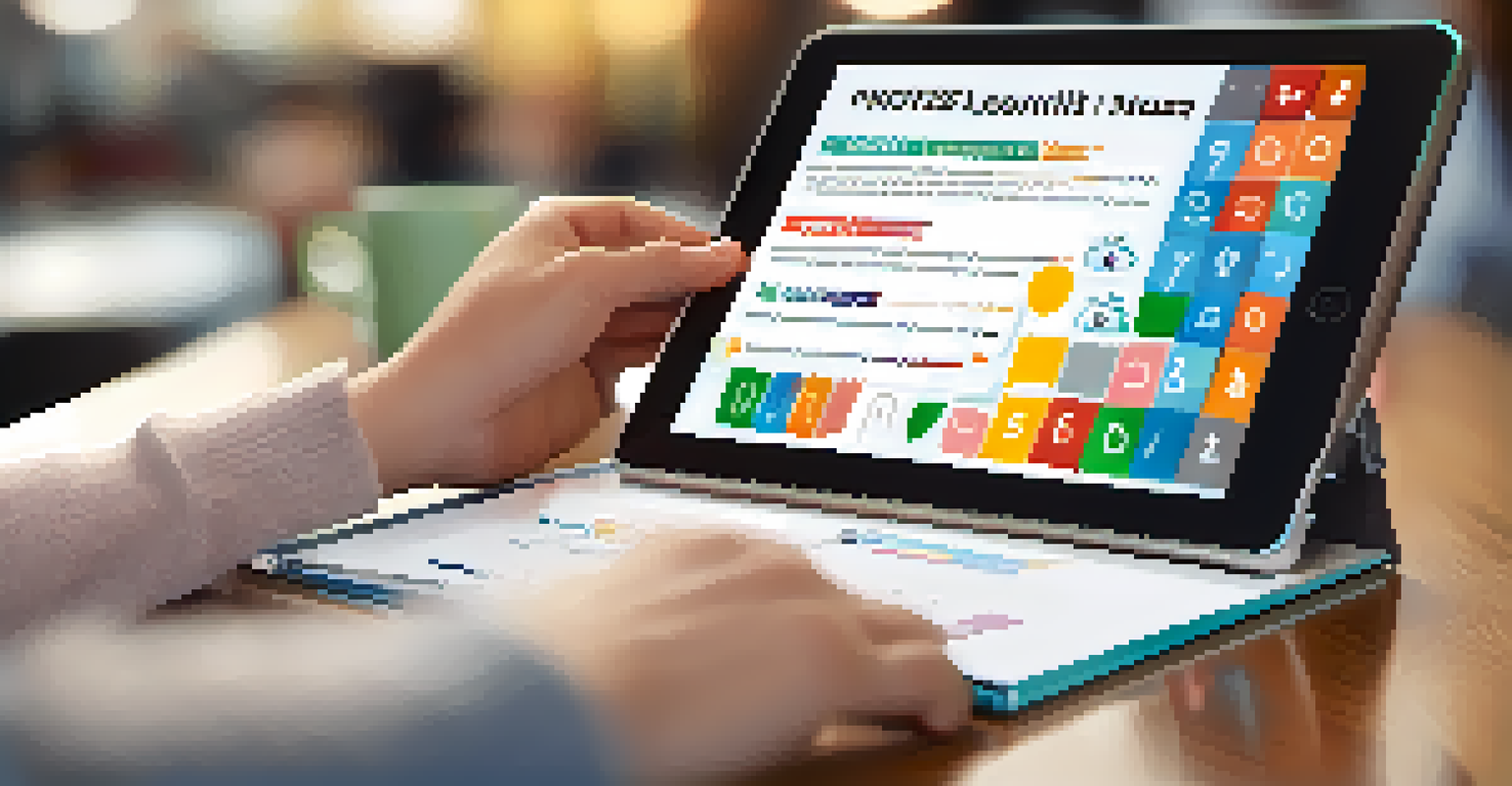Using Visual Aids: Enhancing Your Presentation Effectively

Understanding the Importance of Visual Aids in Presentations
Visual aids play a crucial role in capturing your audience's attention. They can transform a simple presentation into an engaging experience that keeps listeners focused. When you incorporate images, graphs, or videos, you make complex ideas easier to digest.
A picture is worth a thousand words.
Moreover, visual aids can enhance retention. Studies show that people remember information better when it's presented alongside relevant visuals. This means that your audience is more likely to recall your key points long after your presentation ends.
Ultimately, using visual aids isn’t just about decoration; it's about communication. They help bridge the gap between you and your audience, making your message clearer and more impactful.
Choosing the Right Type of Visual Aid for Your Message
Not all visual aids are created equal, and choosing the right type can significantly impact your presentation. For instance, if you’re explaining a process, flowcharts or diagrams can illustrate the steps clearly. On the other hand, bar graphs are effective for comparing data points.

Consider your content carefully. A captivating image can evoke emotions, while a well-designed infographic can summarize complex information succinctly. The key is to align the visual aid with the message you wish to convey.
Visual Aids Enhance Audience Engagement
Incorporating visual aids makes presentations more engaging and helps retain audience attention.
Remember, the goal is to enhance understanding, not overwhelm your audience. A cluttered slide with too many visuals can distract rather than assist, so choose wisely and keep it simple.
Designing Visual Aids: Best Practices to Follow
When it comes to designing visual aids, simplicity is your best friend. Use a clean layout with ample white space to allow your visuals to stand out. Too much text or too many images can create confusion, so opt for concise bullet points or key phrases.
The more you can get your audience to participate, the more they will remember.
Consistent color schemes and fonts are essential for a cohesive look. Stick to two or three colors that complement each other, and use the same font throughout your presentation to maintain professionalism. This consistency helps your audience focus on the content rather than the design.
Lastly, ensure that any text is legible. If your audience can't read the text from a distance, it's unlikely to be effective. Test your visuals in the environment where you'll be presenting to make sure everything is clear and accessible.
Integrating Visual Aids Seamlessly Into Your Presentation
Integrating visual aids into your presentation should feel natural rather than forced. One effective way to do this is to introduce each visual aid in a way that connects it to your spoken narrative. For example, as you discuss a point, refer to a specific visual that illustrates it.
Transitions are also key to maintaining flow. When moving from one visual to another, use phrases that guide your audience, such as, 'Now let’s look at…' This not only keeps your presentation cohesive but also prepares your audience for the next piece of information.
Choose Visuals That Fit Your Message
Selecting the right type of visual aids can significantly improve clarity and understanding of your content.
Practice is essential for smooth integration. Familiarize yourself with the order and timing of your visuals so you can speak confidently about them without losing your audience’s attention.
Engaging Your Audience with Interactive Visual Aids
Interactive visual aids can create a dynamic presentation that encourages audience participation. Tools like polls, quizzes, or even live demonstrations can transform passive listeners into active participants. This engagement can lead to higher retention and understanding of your material.
For instance, using audience response systems allows attendees to answer questions in real-time, making them feel involved. This not only breaks the monotony of a traditional presentation but also provides immediate feedback on their understanding.
Encourage questions and discussions around your visuals as well. This interaction not only clarifies doubts but can also spark deeper conversations, enriching the overall experience for everyone involved.
Overcoming Common Challenges with Visual Aids
Despite their benefits, using visual aids can come with challenges. Technical issues, such as equipment malfunction, can disrupt your flow and cause frustration. To mitigate this, always have a backup plan, like printed copies of your slides or an alternate device.
Another challenge is ensuring that your audience remains focused on the visual aid rather than getting distracted by it. This can happen if the visuals are too complex or flashy. Aim for clarity and relevance, ensuring that every visual directly supports your message.
Evaluate and Improve Your Visuals
Gathering feedback after your presentation allows you to assess the effectiveness of your visual aids and make necessary adjustments.
Lastly, be prepared for varied audience reactions. Some may prefer traditional presentations, while others thrive on visuals. By balancing your approach and being adaptable, you can cater to different preferences and ensure a successful presentation.
Evaluating the Effectiveness of Your Visual Aids
After your presentation, it’s important to evaluate how effective your visual aids were. Gathering feedback from your audience can provide valuable insights into what worked and what didn’t. Consider asking specific questions about the visuals to gauge their impact.
You can also reflect on your own experience during the presentation. Did you feel that the visuals enhanced your message? Were there moments where you felt your audience was lost or disengaged? These reflections can guide improvements for future presentations.

Ultimately, the goal is to continuously improve. By learning from each experience and adapting your visual aids accordingly, you can create more impactful and memorable presentations over time.